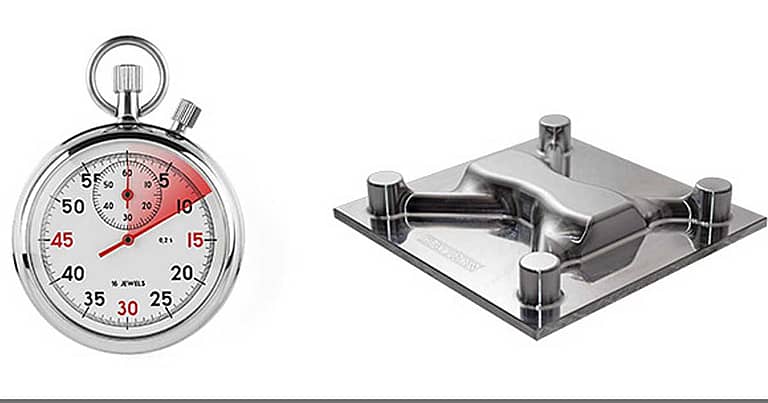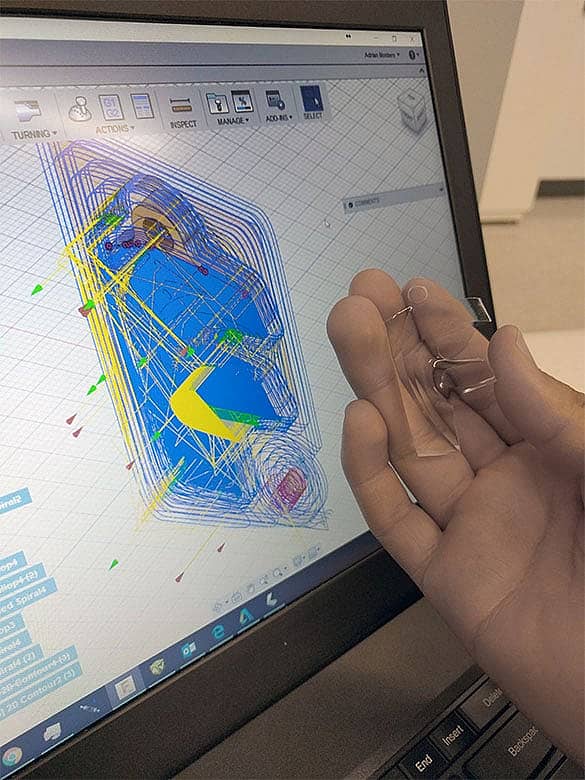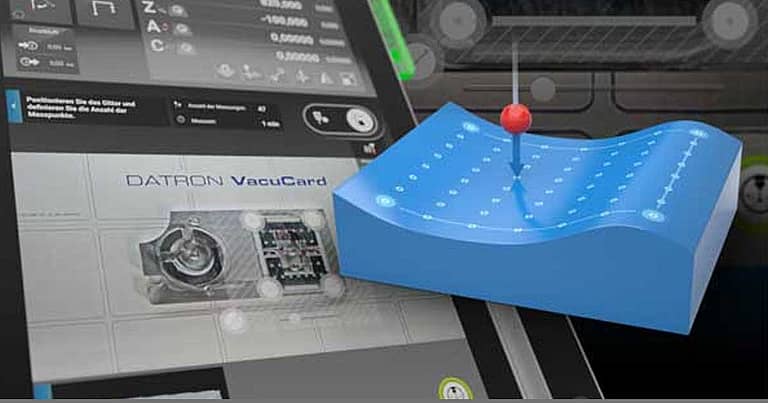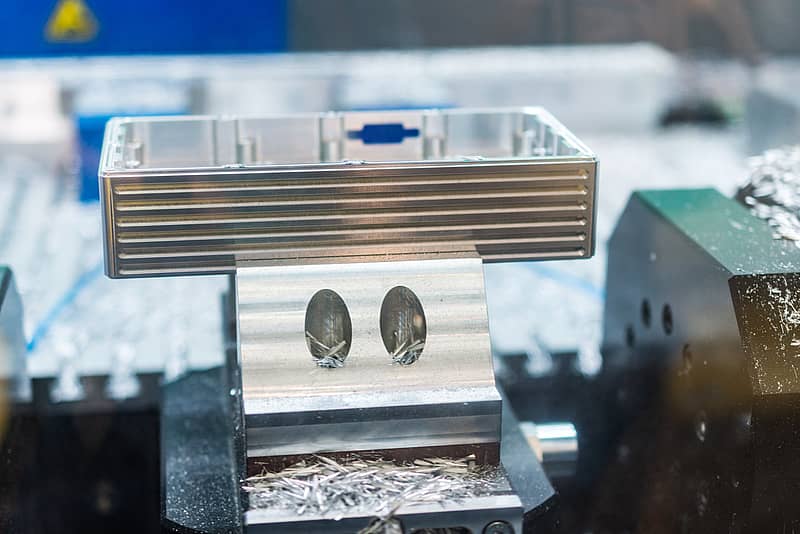
Achieving the perfect CNC machining surface finish requires advanced techniques, attention to detail, and most importantly, the proper tooling. Surface finish tools play a crucial role in this process, enabling CNC machines to produce surfaces with specific textures, smoothness, and appearances.
In this article, discover how to use CNC finishing tools and the proper strategies to achieve a flawless surface that meets the highest standards of quality and aesthetics.
Understanding CNC Machining Surface Finishes
Before we dive into how to choose the best tools for your project, it’s important to understand what CNC milling surface finishing means. Surface finish refers to the texture or quality of the surface of a machined part. This is determined by factors such as toolpath strategies, cutting parameters, tool selection, material properties, and post-processing techniques.
Achieving the desired surface finish involves a balance between precision machining and minimizing imperfections such as tool marks, burrs, and surface roughness. Now that you know what surface finishing is, let’s talk about choosing the best finishing tools.
Choose The Best CNC Finishing Tool
When deciding what tools to use, it’s crucial to understand specific surface finish requirements for your application. Surface finish is typically specified using parameters such as Ra (Average Roughness), Rz (Maximum Height), or RMS (Root Mean Square). Different industries and applications may have varying tolerances for surface finish which makes clarifying these requirements upfront essential.
Like any project with CNC milling, planning, and ensuring that you have the proper tools will set you up for the most success. Now let’s talk about how each CNC finishing tool can be used to achieve the perfect surface finish.
End Mills
End mills are versatile cutting tools used in CNC milling machines to remove material from a workpiece. They come in various shapes and sizes, including ball end mills, flat end mills, and corner radius end mills, also known as bullnose endmills. The selection of the appropriate end mill depends on the material being machined, the desired surface finish, and the feature shape. There are countless types of end mills available to achieve the perfect surface finish.
Face Mills
Face mills are designed to perform facing operations. Facing operations involve cutting a flat surface perpendicular to the workpiece’s axis of rotation. During the cutting process the face mill removes material from the surface to create a flat, smooth finish. This is particularly useful for preparing workpieces for further machining operations or for creating flat surfaces such as those found on the top of a block or plate.
Ball Nose Cutters
Ball nose cutters feature a rounded tip that allows for smooth, contoured cuts. These tools are ideal for achieving curved or sculpted surface finishes. The unique spherical or ball-shaped cutting end allows them to create these surface finishes with a high degree of precision. Ball nose cutters are often used in 3D machining applications where intricate designs and smooth transitions between surfaces are required.
Diamond Tools
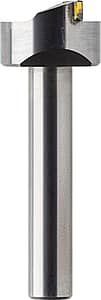
Diamond tools can be considered the ideal choice for achieving the best surface finish for non-ferrous materials. These tools are designed specifically for finishing operations only and can be a true game changer when it comes to CNC machining surface finishes. Diamond-tipped cutting tools offer exceptional hardness and wear resistance, allowing for high-quality surface finishes without post-processing and extended tool life.
DATRON offers a specialized MCD (monocrystalline diamond) face mill that features a hand-ground, singular diamond and a balanced, heavy carbide body. This combination gives the user unparalleled finishes and can provide mirrored finishes in brass and aluminum and optically clear finish in polycarbonate and acrylic.
Machining Strategies for a Perfect Surface Finish
Now that you know which CNC finishing tool gives you the perfect surface finish required for your project, it’s time to consider the milling strategies needed for a flawless execution. Here are a few additional components to keep in mind when you begin milling.
Optimize Cutting Parameters
Fine-tuning cutting parameters such as cutting speed, feed rate, and depth of cut is essential for achieving the desired surface finish. Start with conservative parameters and gradually optimize based on tool performance and surface quality. High cutting speeds combined with low feed rates can often result in smoother finishes, but it’s essential to balance these parameters to help you avoid excessive tool wear or chatter.
Minimize Vibration and Chatter
Vibration and chatter during machining can degrade surface finish and compromise dimensional accuracy. Several strategies can help minimize these issues such as using rigid machine setups, selecting appropriate tooling, and optimizing cutting parameters. Employing vibration-dampening techniques like adaptive control systems or tuned mass dampers can further enhance surface finish quality.
Another way to minimize vibration and chatter is to ensure that your tools are balanced for optimal performance, resulting in a better surface finish and increasing the tool life. Additionally, you can minimize vibration and chatter by measuring the tool’s runout. If the runout is not within the appropriate range, you can produce an overload of chips, potentially causing damage to the tool and the surface finish you are trying to achieve.
Read More: Balanced CNC Tools Reduce Vibration for High RPM & Feed Rates
Implement Proper Machining Techniques
Adhering to best practices during machining can significantly impact surface finish. Climb milling is when the cutter rotates against the feed direction. This technique can reduce tool deflection and produce smoother finishes compared to conventional milling. Additionally, utilizing high-precision tool paths and minimizing tool retracts can help maintain consistent surface quality across the entire workpiece.
Did you know that DATRON machines have a built-in toolpath to make toolpaths and machine movements even better? Learn more about this feature and how it helps you achieve the perfect surface finish.
Post-Processing and Surface Enhancement
After machining, consider post-processing techniques to further enhance the surface finish. Deburring, sanding, polishing, or applying specialized coatings or finishes may be some of the techniques you will need to use. Advanced surface treatments such as vibratory finishing or chemical polishing can be employed to achieve a specific aesthetic or functional requirements for the correct finish.
High-Speed Machining (HSM) Strategies
High-speed machining techniques involve using optimized cutting parameters such as increased spindle speeds, faster feed rates, and lighter depths of cut to achieve superior surface finishes while minimizing tool wear and machining time.
For example, a lighter radial cut may be used to achieve the correct surface finish with less depth than what would be used for a roughing project. It’s always important to remember that different materials may require a change in the spindle speed to achieve the perfect CNC machining surface finish.
Read More: What is High Speed Cutting?
Cutting Fluids and Coolants
Cutting fluids and coolants are essential for dissipating heat, lubricating cutting tools, and flushing away chips while machining. Proper selection and application of cutting fluids can significantly improve surface finish quality and extend tool life, saving you time and money!
Get the Best CNC Finishing Tools Today!
Now that you know more about the different types of CNC finishing tools and the best strategies for achieving the desired surface finish, it’s time to start milling! However, do you know where to get the best tools for CNC machining surface finishes?
DATRON Dynamics is here to help you achieve a flawless surface finish meets the highest standards of machining! Shop our tools and enhance the quality of your surface finishing jobs today!




